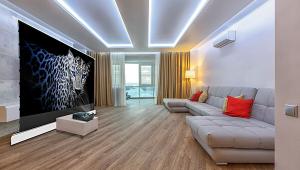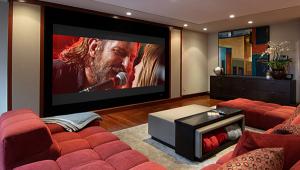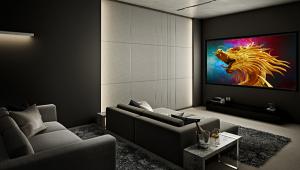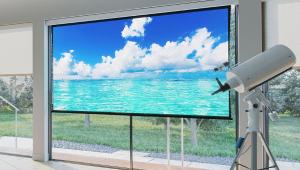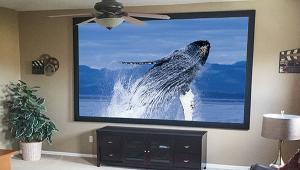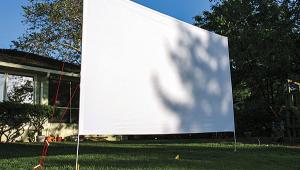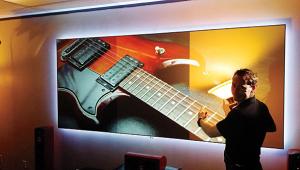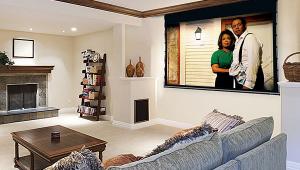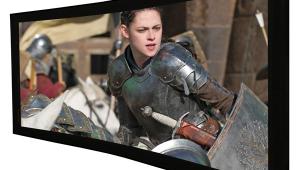Constant Image Height: The Nitty Gritty
Most HD source material—if you include broadcast HD—has an aspect ratio of 16:9 or 1.78:1 (the image width is 1.78 times the height). There are variations on this, most commonly 1.85:1, 1.66:1, or 4:3—the latter for most pre-1953 movies and virtually all pre-HDTV programming.
Wider films, 2.35:1 or thereabouts—often called Scope films in homage to CinemaScope, the first widescreen process to be widely used starting in the 1950s—can’t fill a 16:9 screen unless you want to discard part of the original picture by cropping, or by panning and scanning. On a 1920-by-1080-pixel HDTV, such films have a resolution of approximately 1920 by 820. The remainder of each frame is filled by those ubiquitous black bars on the top and bottom. We see the film as the director intended, but we leave 24 percent of the screen’s vertical pixel structure unused.
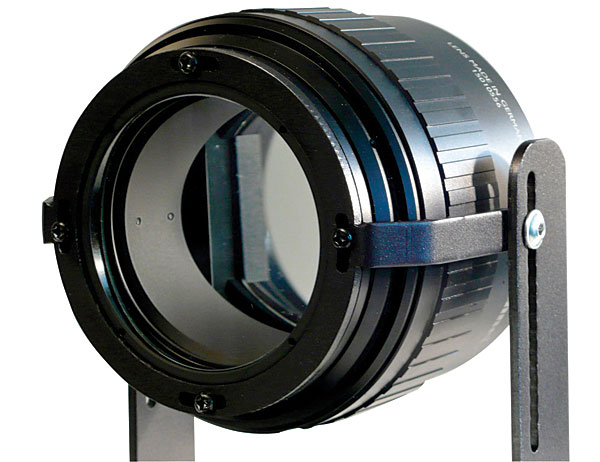
If we have a 2.35:1 projection screen, there are two ways to eliminate the bars—or at least make them less visible. The most commonly used technique is also the most expensive: the use of a so-called anamorphic lens, such as the Schneider shown here, or the widely used and less expensive (but still far from cheap) models from other respected suppliers such as Panamorph. In the most commonly used version of the anamorphic technique, the 2.35:1 source image is first stretched vertically by electronic processing. This eliminates the black bars but produces a funhouse-mirror image. To pull things back into the correct shape, an anamorphic lens is placed in front of the projector’s own lens. The new lens stretches the image horizontally and voilà: a properly proportioned 2.35:1 image on your 2.35:1 screen, with no black bars. When the source isn’t 2.35:1, the lens is moved aside, usually by a motorized sled. While the resulting image varies in width depending on the source, it is a always a constant height.
No real resolution is added with the anamorphic technique. True, you’re now using all the pixels in the imaging chip(s) on that 2.35:1 image, whereas before, some of them were wasted on the black bars. But the extra pixels are artificially created by the vertical stretch processing. They include no new, real information. There’s nothing on the screen that wasn’t already in the 1920-by-820 source. But there are benefits from the added pixels, including a finer onscreen pixel structure and a slightly brighter image. The added optical glass in the anamorphic lens does steal some brightness. But this is more than compensated for by a greater number of pixels in the actual image. Even if these pixels don’t provide a real increase in resolution, they do allow more light to pass through the imaging chips and onto the screen.
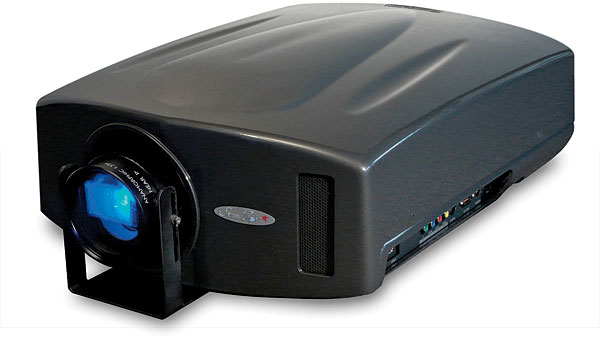
The downsides to the anamorphic technique are the need for extra video processing and a large, expensive hunk of glass sitting in front of the existing projector lens. But there’s another approach to filling the 2.35:1 screen with a 2.35:1 source image: Simply zoom the image up in size as needed. The black bars are still there, but they spill off the active area of the screen at the top and bottom, where they can virtually disappear into the black frame or matting around the screen. The zoom method has none of the advantages of the anamorphic technique—and none of the disadvantages, either. But it can be inconvenient, since you must readjust the lens, often in focus, zoom, and (because zooming often slightly alters the location of the image) lens shift for the two different image sizes. These adjustments only take a minute or two, although if the on-chassis adjustments aren’t easy to reach, as in a ceiling mount, you’ll want all of them to be motorized. You also don’t want to consider this method if your projector doesn’t offer both horizontal and vertical lens shift. As noted in the main review, take care that the chosen throw distance for the projector is such that its zoom has enough range to cover the requirements of both aspect ratios.
The zoom technique was used for this review. No anamorphic lens was employed.—TJN
